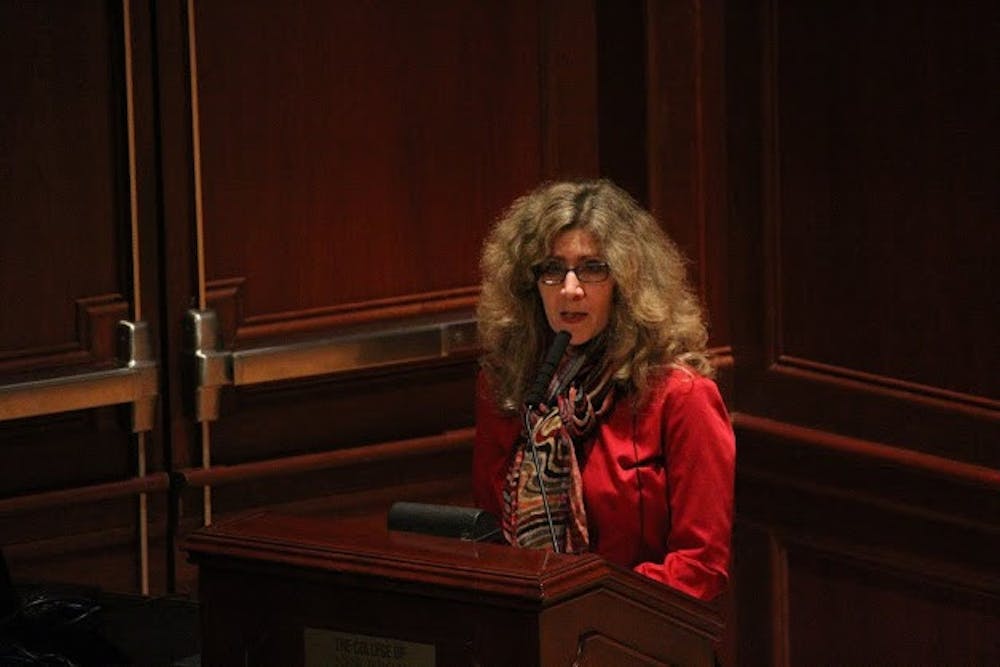By Brooke Migdon
Correspondent
In spite of whipping winds and the looming threat of a torrential downpour, a large crowd of students and faculty gathered inside Mayo Concert Hall on Friday, Oct. 2, to listen to two of the College’s own faculty members speak about their research.
Lee Ann Riccardi, professor of art history and departmental chair at the College, spoke of her work in Greece during which she identified Greek and Roman portraits (stone-carved busts) in addition to her extensive research into and her practice of archaeological excavations. Deborah Hutton, associate professor of art history, discussed her studies of Indo-Islamic art in Southern Asia and the important connotations her studies have on contemporary society.
“For me, the story always begins in Athens,” Riccardi said. “As far as the scholarly work I do, it always begins with an object.”
For Riccardi, whose particular interests lie within the depiction of Roman royalty in the Greek world, that object is most often, and most favorably, a portrait. From examining these portraits, Riccardi has been able to identify numerous influential members of ancient Roman society — an invaluable contribution to the documentation and the modern world’s understanding of the history of the era.

In one of her many anecdotal references to the importance embedded in her work, Riccardi told of the National Museum in Athens’ misidentification of a portrait as Roman aristocrat Julia Mamaea, and how her own research helped to correct the error.
At the conclusion of Riccardi’s presentation, she stressed the importance of physical contact with the pieces the students in the audience may someday be working with.
“You lose a great deal by only studying photography,” Riccardi said. “You must interact with the art in order to keep art history relevant and alive.”
As Riccardi stepped off the stage and welcomed her colleague, Hutton lightheartedly stated that although her research revolves around Indo-Islamic art, “Greece will always have a soft spot in my heart.”
Hutton first spoke of her trip to the Deccan region of India, which is centered around the city of Hyderabad. Hyderabad, now a hub for technological advances and innovations, was once a center for Islamic court culture, now often long forgotten.
“Everyone knows Michelangelo and Da Vinci,” Hutton said. “My mission is to bring out the stories that have not yet been heard.”
Hutton stressed the importance of study in areas such as her own.
“Islamophobia is rampant,” she said. “When you study Islam and art history you are forced to take a second look at your own beliefs. In places like India, you discover a cultural and religious synthesis that makes you view the world in a completely different way.”
Riccardi, a Fulbright Scholar who spent three and a half years studying abroad in Greece, engaged the crowd with compelling tales of her research. Hutton, equally accomplished in her own field of work, was able to capture the attention of the audience with interesting yet informative narratives of her work. Both women strongly articulated the importance of art and art history in the modern world.
According to the speakers, the study gives the average member of the 21st century a window into the inner workings of forgotten civilizations, while still providing insight on contemporary societies across the globe and promoting an ideal of universal tolerance.







